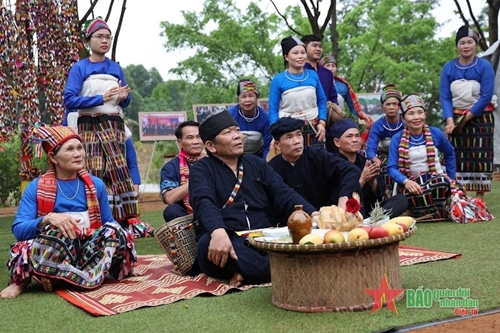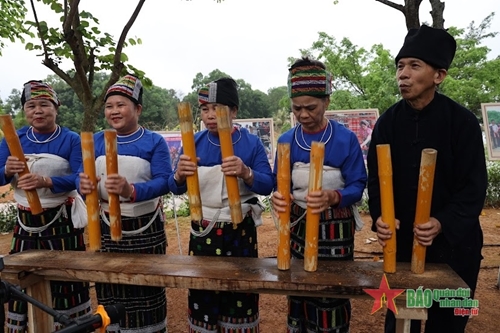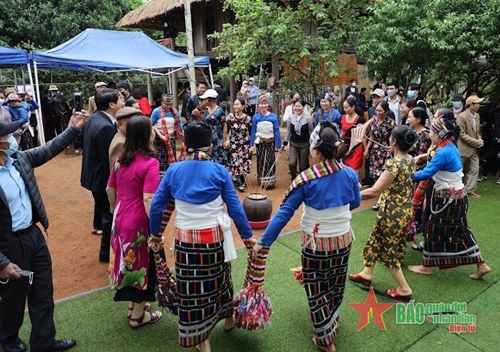May 16, 2022 | 19:15 (GMT+7)
The Kin chieng booc may festival of Thai ethnic group in Thanh Hoa province
PANO - The Kin chieng booc may festival (also known as Cha Chieng, Xang Khan) means “Singing and dancing to celebrate under the cotton tree,” is a cultural and spiritual activity of the Thai ethnic people in Xuan Phuc commune, Nhu Thanh district in particular, and the mountainous Thai people in Thanh Hoa province in general.
The Thai ethnic people regard this as a communal cultural and artistic activity in which everyone in the village has the right to participate in and enjoy.
The festival is divided into two parts: The ceremonial part consists of rituals of worshiping the gods, the essential prose told by a shaman about the establishment of the village, praising ancestors and people with meritorious services. The festival part is a system of 26-50 acts performed by a shaman or "guests" such as chopping firewood, farming, sword dancing, sweeping the home, a flute musician... each of them having a god from Muong Troi who come down to attend (played by a shaman).
Furthermore, there is a part of playing traditional musical instruments such as gongs, khua luong, drums, boong bu, and flutes; as well as folk games such as chop singing, bamboo dancing, array playing, tug of war, and cotton ball throwing.
In 2017, Xang Khan festival was recognized as a national intangible cultural heritage, contributing to the development of a Vietnamese culture deeply imbued with national identities.
The People’s Army Newspaper would like to introduce some images of the festival.
    |
 |
|
The shaman telling the establishment of the village, praising the ancestors in the ritual part |
    |
 |
|
Khua luong in the festival creates a unique feature of the Xang khan festival. |
    |
 |
|
Young Thai men and women singing and dancing under the cotton tree |
    |
 |
|
The festival is a cultural and artistic activity in which both locals and tourists have an opportunity to enjoy |
Translated by Ngoc Linh